Walthamstow Wetlands wins Best Refurbishment in the 2018 Brick Awards
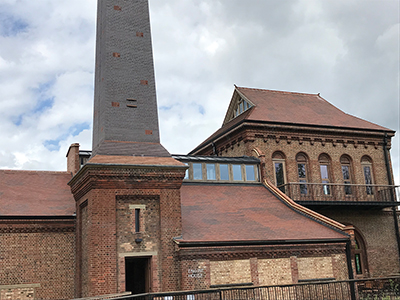 Walthamstow Wetlands is a series of 10 reservoirs, located in the Lea Valley Special Protection Area, providing drinking water to 3.5 million Londoners. The 211-hectare site is an area of Special Scientific Interest, which has been transformed into one of Europe’s largest urban Wetland nature reserves.
Walthamstow Wetlands is a series of 10 reservoirs, located in the Lea Valley Special Protection Area, providing drinking water to 3.5 million Londoners. The 211-hectare site is an area of Special Scientific Interest, which has been transformed into one of Europe’s largest urban Wetland nature reserves.
A collaboration between Thames Water, the London Borough of Waltham Forest and London Wildlife Trust, the aim was to conserve the heritage and identity of the site, whilst allowing free public access to this unique landscape of water, woods and marshland.
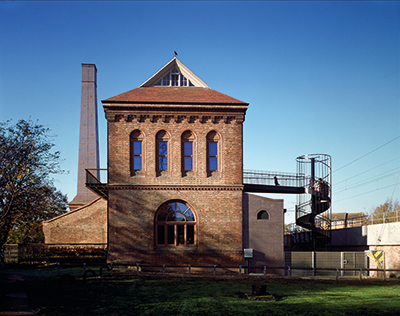 With sustainability and ecology at the heart of the regeneration, architects Witherford Watson Mann worked with Kinnear Landscape Architects to deliver a unique vision, which included the sympathetic restoration and conversion of a Grade II-listed brick-built Engine House and a disused neighbouring mill into a new visitor centre and viewing platform.
With sustainability and ecology at the heart of the regeneration, architects Witherford Watson Mann worked with Kinnear Landscape Architects to deliver a unique vision, which included the sympathetic restoration and conversion of a Grade II-listed brick-built Engine House and a disused neighbouring mill into a new visitor centre and viewing platform.
Open to the public for the first time in 150 years, Walthamstow Wetlands is a conservation and restoration project of unique value, which has received widespread acclaim and recognition.
It has won the Refurbishment category of the 2018 Brick Development Association (BDA) Brick Awards, which recognise excellence in design and construction using brick and clay products.
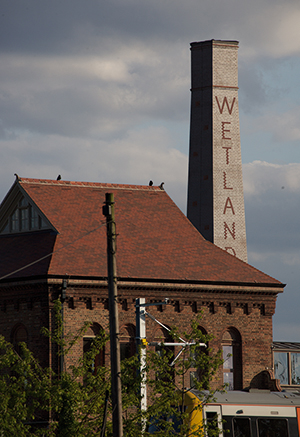 According to the BDA judges: “The Wetlands centre dignifies and respects the industrial heritage of the site and transforms its extraordinary setting.” They also described it as a very skilled work of refurbishment on an industrial building.
According to the BDA judges: “The Wetlands centre dignifies and respects the industrial heritage of the site and transforms its extraordinary setting.” They also described it as a very skilled work of refurbishment on an industrial building.
Other accolades include a prestigious 2018 RIBA National Award, a RIBA London Award, Best Use of Heritage in Placemaking in the Planning Awards and a Civic Trust Award. The project is also one of the finalists for the Riba Journal MacEwen Award 2019, which recognises and celebrates architecture for the common good.
At the heart of the restoration is the old Engine House, which was built in 1885 to house the massive steam driven pump engines. This has been restored and converted to accommodate a café and visitor’s centre, with a kitchen extension built from Brown Brindle facing bricks supplied by West Midlands manufacturer Ketley Brick.
Known for their industrial authenticity and durability, these ‘Class A’ engineering bricks suited the context of the site perfectly. Designed to contrast with the softer brick of the existing building, the detailing of the new arches and the English bond pattern followed the same rhythm as the original arcaded brick of the adjacent north wall.
The engine house roof was also fully restored using Dreadnought Tiles’ Brown Antique plain clay roof tiles, which are manufactured at the same factory as Ketley Bricks.
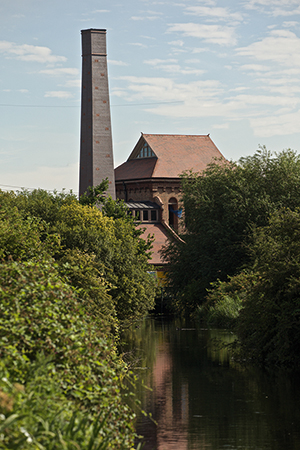 The interior restoration was handled with similar sensitivity, using a simple palette of materials including Ketley clay quarry tiles for much of the flooring, which combined well with the natural tones of the exposed brick and timber panelling on the walls.
The interior restoration was handled with similar sensitivity, using a simple palette of materials including Ketley clay quarry tiles for much of the flooring, which combined well with the natural tones of the exposed brick and timber panelling on the walls.
Integral to the project was the replacement of the old Engine House’s original brick chimney – a powerful industrial symbol, which was demolished in 1960.
Witherford Watson Mann grafted a striking new 24m-high ‘swift tower’ (below) onto the remaining chimney plinth to serve as an ecological feature to accommodate local wildlife.
Constructed from the same Brown Brindle engineering bricks, the structure tapers from 1.5 bricks thick at the bottom to one brick thick at the top, its shiny surface standing out, yet also complementing the Victorian heritage. The brickwork was left rough on the inside to provide roosting areas for swifts and bats.
The tower itself incorporates 54 bespoke red clay swift boxes co-designed by Ketley and Witherford Watson Mann to encourage the nesting of urban swifts. The boxes have sloping entrances and a small hole in the front to keep the nesting areas well drained and were placed at least 1m apart to prevent rival swifts fighting.
The only known structure of its type, ‘swift tower’ is visible from across the valley, signalling repair and transformation – repair of civic infrastructure and transformation from pollution to ecology.
The BDA judges stated: “The brick choice for the tower is very well informed; the hard, Brown Brindle brick has a soft sheen to it that looks sometimes dark and at other times slightly reflects the sky.
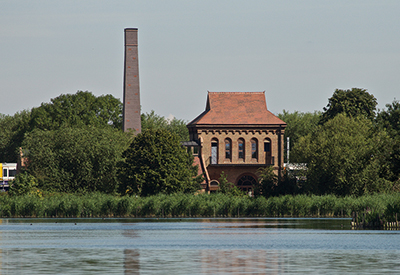 “The choice of brick in the refurbishment element also complements the lovely pink existing brick. Across both old and new elements, the quality of detailing and execution is extremely high.”
“The choice of brick in the refurbishment element also complements the lovely pink existing brick. Across both old and new elements, the quality of detailing and execution is extremely high.”
Alex Patrick-Smith, managing director of both Ketley Brick and sister company Dreadnought Tiles said: “We are delighted to have manufactured the bricks, roof tiles and quarry tiles that were so in keeping with the Victorian heritage of this site.
“Our commitment to manufacturing high specification natural products using a combination of traditional and modern techniques has been recognised in several award-winning heritage buildings.”
Other award-winning projects include the re-roofing of the Grade II*-listed Church of St Mary in Bushbury in Woverhampton which recently won in the Best Roof Tile Application for a Heritage Roof category at the 2018 Pitched Roofing Awards for Dreadnought Tiles.
For further information visit www.ketley-brick.co.uk and www.dreadnought-tiles.co.uk
Images courtsey of Heini Schneebeli















